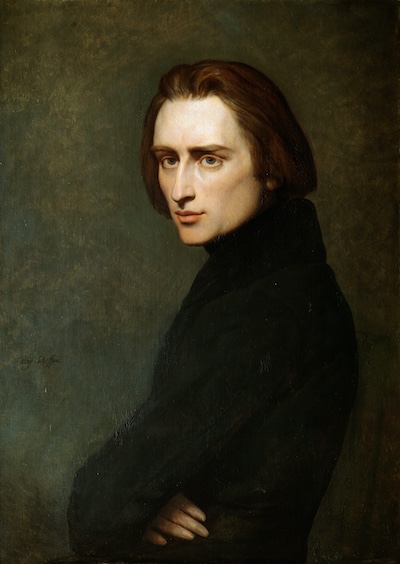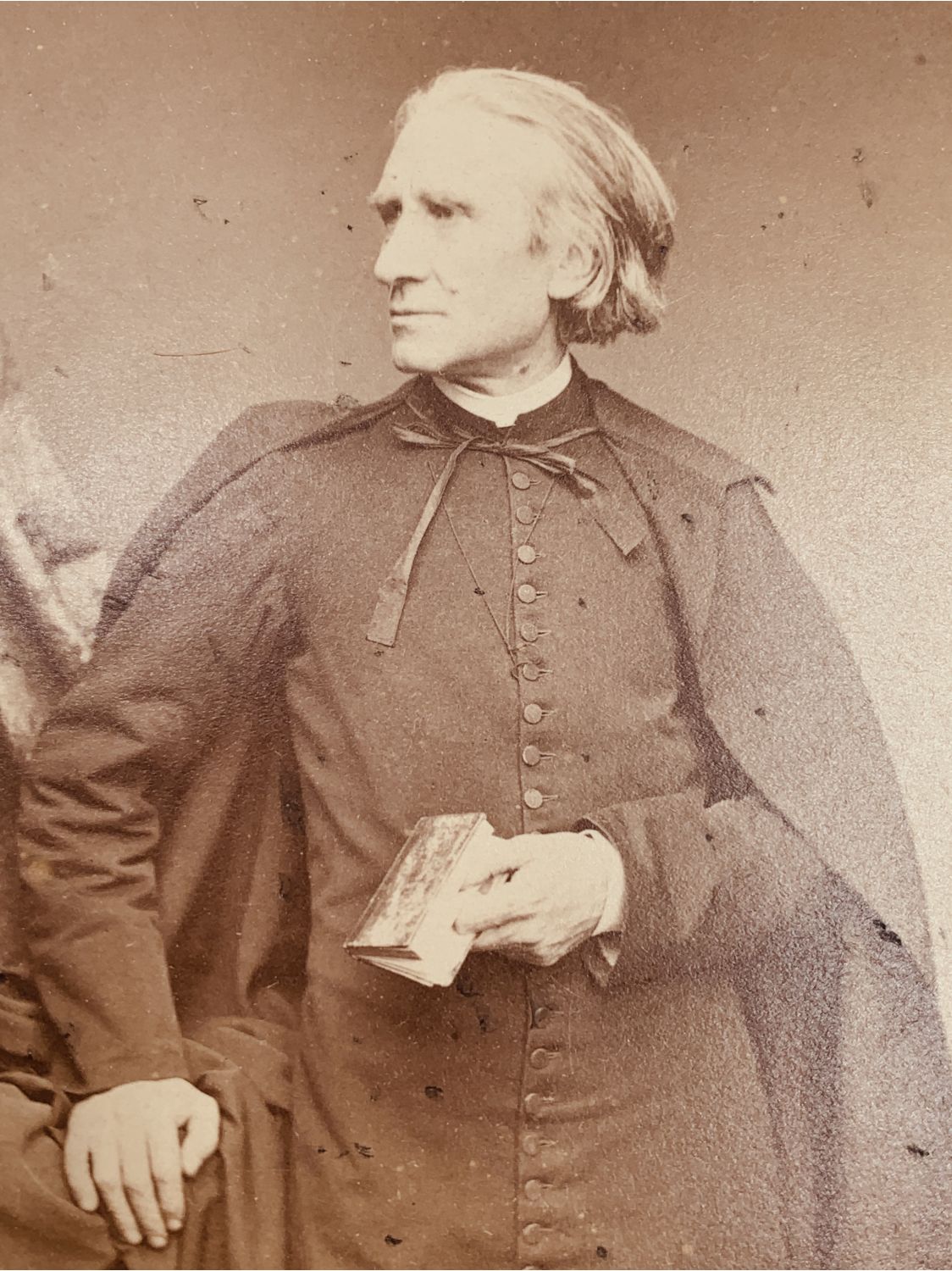

It is difficult to know where to introduce Franz Liszt. His 74-year life and career stretches from late Classicism all the way to Impressionism. He seemed to know everyone and be involved in everything. Study nearly any part of the Romantic Period, and Liszt's influence is pressing on it.
Born in Hungary 1811, Liszt's father was a colleague of Haydn in the service of Prince Nikolaus Esterházy. Liszt began to learn the piano at age 7 and was giving concerts by the age of 9. He moved to Vienna with his father in 1822, where he was supported and encouraged by Beethoven and Schubert and studied composition with Antonio Salieri. He gave a number of successful concerts in Vienna, always playing from memory (and sometimes embarrassing older performers who did not.) Liszt's father left the Esterházys' service the following year so that they could stay there.
His father passed away in 1827, and Liszt moved to Paris with his mother. He gave lessons and taught composition for a living. In Paris, he performed for the Duke of Orléans, and was still in the city for the July Revolution three years later when the Duke was made King Louis-Philippe. That same year, Liszt met Hector Berlioz and Frédéric Chopin. Liszt began to discern a religious vocation, but returned to the piano in 1832 after hearing the Italian violinist Nicolò Paganini perform.
In 1835, Liszt scandalized Paris by eloping with the already-married Countess Marie d'Agoult. They hid in Switzerland and had three children: Blandine, Cosima, and Daniel. Four years later, Liszt went on tour as a virtuoso soloist, and his fame swept across Europe like wildfire. His incredible technique awed audiences, and his good looks made him exceptionally popular with young women. Most of the money Liszt earned on these tours was donated to various charities. Liszt supported educational projects like the Royal Academy of Music in Hungary, religious projects such as the completion of Cologne Cathedral and the construction of St. Leopold Church in Budapest, cultural initiatives like the Beethoven Monument in Bonn, and relief efforts for victims of various disasters.

Liszt and Countess Marie broke things off in 1844, but Liszt was not done with scandal, becoming involved with a Polish princess named Carolyne Sayne-Wittgenstein in 1847. Encouraged by her, he stopped touring and became the Kapellmeister of Weimar, focusing on composition and promoting the efforts of other composers like Berlioz and Richard Wagner. Many of Liszt's most important compositions came from this period.
In 1859, Liszt's son Daniel died. The following year, Liszt learned that the Vatican would not annul Princess Carolyne's earlier marriage. Liszt's daughter Blandine passed away the following year. At this point, Liszt broke things off with Princess Carolyne and retired to a small monastery outside of Rome, where he took minor orders (basically becoming a monk.) He continued to compose and occasionally perform around Europe, notably writing the liturgical music for Emperor Franz Joseph's 1868 coronation as King of Hungary. He continued to sponsor and encourage other composers as well, meeting Edvard Grieg, Claude Debussy, and Camille Saint-Saëns during this time.
Liszt's daughter Cosima married Richard Wagner in 1870; in 1886, Liszt died in Germany after visiting her at the Bayreuth Festival.
Hungarian Rhapsody (1846)
Étude No. 3 "Un Sospiro" (1849)
Transcendental Études (1852)
Faust Symphony, III. "Mephistopholes" (1857)
Benedictus from "Hungarian Coronation Mass" (1868)